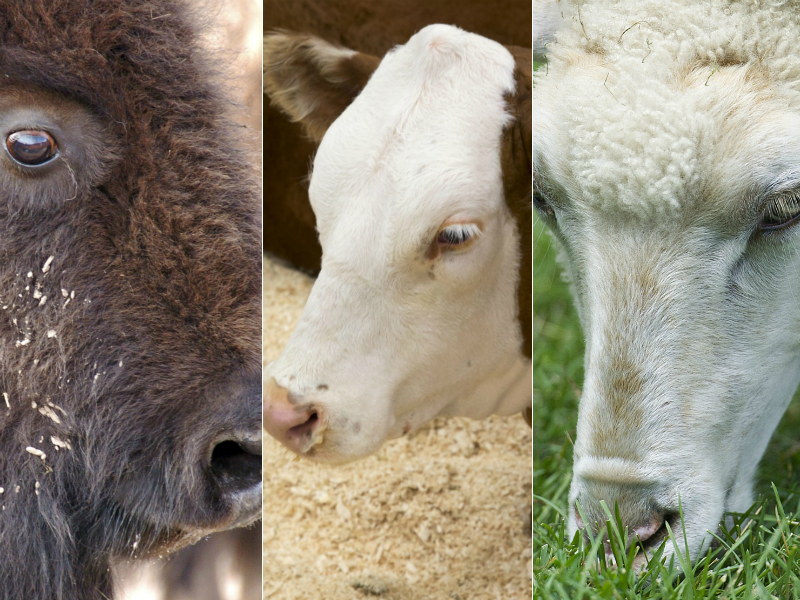Editor’s note: The Saskatchewan government has issued a correction on the location of the anthrax cases. The government previously said anthrax was found in the RM of Golden West, which is adjacent to the RM of Chester.

Anthrax has been confirmed as the sickness that killed seven animals in the Regional Municipality of Chester, Sask., about 150 kilometres from Regina.
The disease, to which certain grazing animals are highly vulnerable, was affirmed following laboratory tests on Thursday, and now the provincial government is warning producers to watch for the disease in their stock.
What is anthrax though, and why are some animals so susceptible to infection?
WATCH: Aug. 2, 2016 — Anthrax outbreak in remote area of Russia kills boy, infects 20

Anthrax is a disease that’s caused by bacteria that are known as bacillus anthracis, according to the Centers for Disease Control and Prevention (CDC).
These bacteria create inactive spores that can live in plants, soil or water before they’re activated.
They can live in them for up to 50 years, and in the bones of animals killed by anthrax for as long as two centuries, reported the Government of Western Australia.
READ MORE: Anthrax kills 7 animals in southeastern Saskatchewan
The spores can activate when they enter the body.
The bacteria multiply when they activate, spreading and producing poisons that can sicken or kill the beings they’ve infected.
The CDC lists two main ways that anthrax can infect you. One is through scrapes or cuts in the skin, after which infection takes hold in up to a week.
WATCH: Aug. 16, 2016 — Russia tackles ‘Zombie’ Anthrax outbreak in Siberia

The other is by breathing it in, which can lead to infection between one week and two months after exposure.
Anthrax can also be contracted in the gastrointestinal system, but this rarely happens.
Injection is also possible, but the CDC said this has never been reported in the U.S.
READ MORE: Anthrax confirmed in cattle in RM of Harris
Outbreaks of anthrax can take place when soil holding spores has been disturbed, or when heavy rains or drought take place.
Weather events such as flooding can push spores to the surface. When wet areas dry, grazing animals can be vulnerable to those spores, the Government of Saskatchewan reported.
Excavation can likewise expose spores.
WATCH: Feb. 16 — ‘They eat holes in the animal’s brain’ — ‘Zombie Deer Disease’ causing stir in U.S. midwest

Animals such as cattle, sheep, goats and bison are “highly susceptible” to anthrax, Saskatchewan’s Ministry of Agriculture warned Thursday.
Horses have also known to be infected, the ministry added.
Birds, pigs and carnivores are more resistant to anthrax, but dogs and cats that live on farms should be kept clear of animal corpses.
READ MORE: Dead bison on herd on reclaimed oilsands site test positive for anthrax
Animals are usually found dead in anthrax cases.
Symptoms, however, can include collapse, shortness of breath and blood dripping from the nose.
When an animal dies of anthrax, an owner should work to keep blood from contaminating the ground, the Government of Saskatchewan said.
WATCH: Feb. 16, 2017 — Sask. scientists start next phase in developing world’s first bovine TB vaccine

Vaccination can keep anthrax from spreading in the first place.
The only such treatment licensed for the use in Canada is the Sterne vaccine, and it can only be used on horses, cattle, goats, sheep and pigs, the provincial government said.
The vaccine will make animals immune, but it can take as long as 10 days.
READ MORE: Anthrax confirmed in Harris, Sask. area cattle
Saskatchewan’s government warned agricultural producers to vaccinate their animals when it advised the public of the latest cases.
Producers should also ensure vaccination if anthrax has been detected in neighbours.
Should an animal die of anthrax, however, the carcass “should not be moved or disturbed, and should be protected from scavengers such as coyotes or ravens, to prevent spreading spores in the environment.”
Anthrax-stricken animals are not believed to pose a major threat to humans, but people should avoid direct contact with them, or their carcasses.
- Canadian man dies during Texas Ironman event. His widow wants answers as to why
- ‘Sciatica was gone’: hospital performs robot-assisted spinal surgery in Canadian first
- Canadians more likely to eat food past best-before date. What are the risks?
- Invasive strep: ‘Don’t wait’ to seek care, N.S. woman warns on long road to recovery




Comments